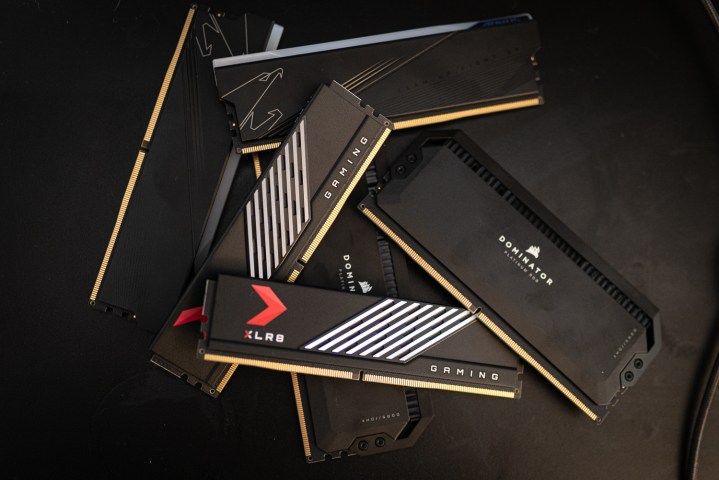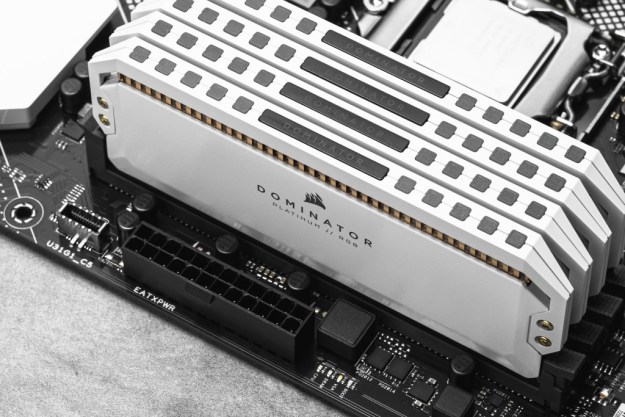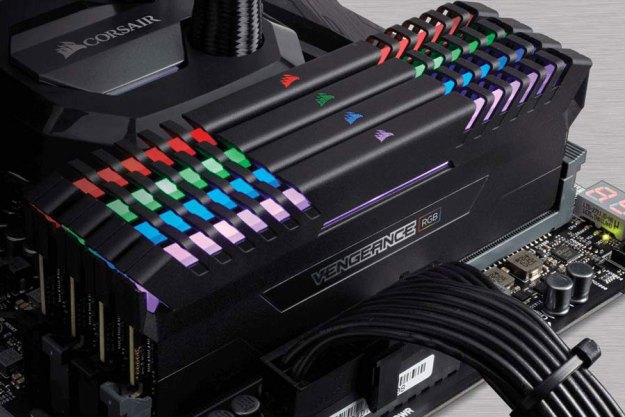Non-binary memory. It might not be set to give you the same performance uplift as a new graphics card, and it’s not as intriguing as AMD’s X3D CPUs, but it’s still an interesting new wrinkle in how you build a PC. Non-binary memory effectively allows half steps in RAM quantities, so instead of only having options for sticks of 8GB, 16GB, 32GB (and so on), you can now buy a 24GB DIMM, or a 48GB one.
That might not sound like much, but in the coming years as games demand more than 16GB — but where 32GB would be overkill — these new 24GB memory kits are going to be very popular for the cost-cutting they facilitate.

What is non-binary memory?
Non-binary memory is memory that uses different-sized memory modules to create RAM sticks that offer mid-step memory quantities. They still function like RAM in every way, and (even though the name suggests otherwise) still encode data in
The difference with this type of memory is how it’s manufactured. Where traditionally, memory has been built with modules that are sized in even numbers — 4Gb (that’s gigabit, not gigabyte) chips, 8Gb chips, and most recently with DDR5, 16Gb chips That latter module equates to 2GB (gigabyte — note the capital B) per chip, letting manufacturers create 16GB sticks of RAM. Using new manufacturing methods, however, Samsung, Micron, and other memory manufacturers have been able to increase the density of these modules, so they instead are 24Gb in size, or rather, 3GB.
That allows for the creation of larger, atypical memory sticks, like the 24GB and 48GB memory kits that have started filtering through into the market.
At the time of writing this new manufacturing technique is only possible with DDR5 memory, but we may see it backported in the future to earlier generations of DDR memory, or even see it utilized to provide graphics cards with greater VRAM densities, or in SSDs for greater storage capabilities.
Is non-binary memory better?
We’re still waiting to see how these new generations of RAM kits perform before we can say for sure whether non-binary memory is intrinsically better, but we can make some assumptions. The fact that the memory modules are denser means that you’ll be able to have greater quantities of memory in your PC eventually — load up with four 48GB kits for a massive 192GB of memory if you like! For those not looking to push their memory to extremes, though, you can save money by only buying the memory you need. You may not need to buy a 32GB kit when 24GB will do just fine. The same goes for 64GB and 48GB.
Some manufacturers have claimed that the new non-binary memory kits are able to offer better energy efficiency and even tighter timings than traditional memory configurations. We want to test these claims firsthand before saying anything definitive, but it seems like the new non-binary DIMMS may have a performance advantage too.
Should you buy non-binary memory?
If you already have enough DDR5 memory, there’s almost no reason to upgrade to non-binary memory just because it’s the hot new thing — check if you have enough memory, here. However, if you are thinking about a memory upgrade, or are planning on building a new Ryzen 7000 or Intel 13th generation PC, then it’s well worth considering non-binary memory.
However, you’ll need to consider the costs involved. While there is the potential for cost saving with non-binary memory, that’s because capacity has increased, so you’re only really saving if you opt for larger kits. A single 24GB module might be more affordable than buying a 32GB kit with two 16GB sticks of RAM, but you’ll be restricted to single-channel performance with just one DIMM. That’s a big drop in potential memory performance, which at current DDR5 prices, just isn’t worth the sacrifice.
A 48GB kit is unlikely to be as affordable as a 32GB kit unless you find some kind of unique deal. Only buy 48GB if you will see a benefit from it — and if it’s just for gaming, you probably won’t — and make sure that that cost saving over 64GB makes sense.
Editors' Recommendations
- How to choose the best RAM for your PC in 2024
- DDR5 vs. DDR4 RAM: Is DDR5 worth it?
- PC memory is about to double in max capacity
- These are the PC games pushing people to buy more RAM
- The best DDR5 RAM you can buy right now




